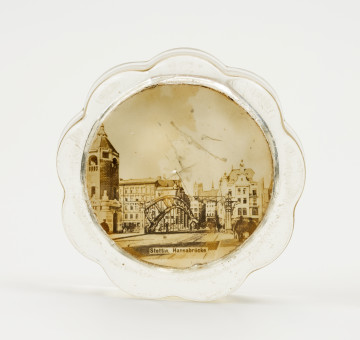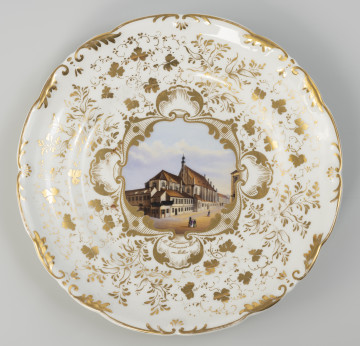
Portfolio Lviv - Maryacki Square
1915
National Museum in Lublin
Part of the collection: Iconography of Szczecin in the 17th-19th centuries
On 23 September 1898, in the presence of the German Emperor Wilhelm II and his wife, the city authorities with the Mayor Hermann Haken and a crowd of Szczecin's residents, a monumental fountain monument was unveiled at the Marktplatz (today's Tobrucki Square) – a piece that symbolised the city’s character as a port. Founded by wealthy merchants, restaurateurs and townhouse owners of Szczecin (then Stettin), the fountain was created in the workshop of an outstanding German sculptor and professor at the Berlin Academy of Fine Arts, Ludwig Manzl (1858-1936). The official name of the composition was Manzelbrunnen, or Manzl's Fountain, and the central female figure was named Sedina. Her name was supposed to be derived from the name of Germanic Sidin tribe, mentioned by Claudius Ptolemy, to whom the 16th century chronicler Thomas Kantzow attributed the foundation of Stettin. The design of the fountain was extremely popular before it even came to fruition. The composition, which appealed to the public's preference for realism, which was characteristic of Manzl's work, was printed in books, magazines, as well as in the form of numerous postcards and prints. One of the most prominent example is the striking woodcut by Feldweg based on a model of the fountain, which popularised the piece before it was even installed in the town hall square.
Anna Lew-Machniak
Author / creator
Dimensions
cały obiekt: height: 418 mm, width: 296 mm
Object type
graphic
Creation time / dating
Creation / finding place
Identification number
Location / status

1915
National Museum in Lublin

1901 — 1945
National Museum in Szczecin

1860 — 1864
National Museum in Szczecin
DISCOVER this TOPIC
National Museum in Szczecin
DISCOVER this PATH
Educational path